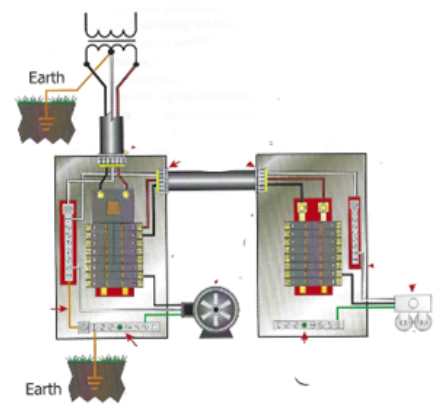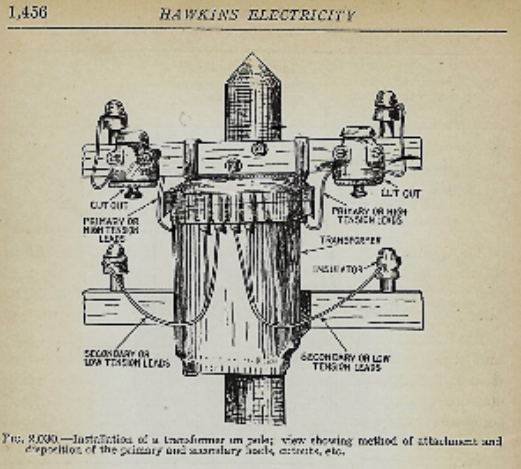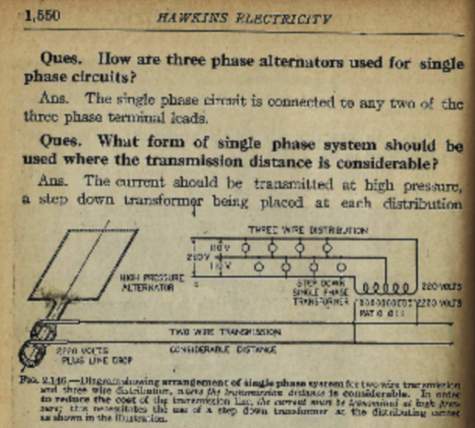From Cliff K9QD
220, 221- Whatever it takes. Electric Utility Service Drop…and why the service drop to the consumer has a center-tapped transformer grounded to earth.
Wiring diagram of today’s typical single-family service entrance panel:
Note the Utility Transformer’s center-tap is grounded at the pole. Also, the consumer’s service entrance panel and Neutral/Equipment bonding bars are also grounded to earth.
Origin of ‘grounding’ and why utilities in the early 1900s quickly changed to (for single phase service) center-tapped transformers at the customer’s drop.
In the early 1900s, as electrification spread to more and more consumers, the new advantages of Alternating current allowed higher voltage transmission than Direct Current and saved a ton of copper [Source: Hawkins Electrical Guide Theo. Audel & Co 1917].
Homes needed 110V (ok, 220, 221- whatever it takes) so a pole-pig (transformer) hung on the High Voltage line out at the lot-line’s right-of-way with the Low Voltage drop going into the home.
Transformer design was very well developed at the time but internal windings with dielectrics using mica, mineral oil, and other insulation approaches (paper/cloth/enamel insulated windings) were only kind-of adequate.
Early 1900s utility pole-pig (transformer) dropped two lines to the consumer’s home.
Experience quickly revealed a terrible weakness: if a lightning strike upstream traveled downstream or if internal insulation in the transformer failed for whatever reason while the service continued to be apparently fine, that puncture could allow the local neighborhood’s 12KV (4.8KV whatever) distribution voltage on the PRIMARY to appear on the secondary and onto the home’s wiring. Home wiring method typically used was knob-and-tube, or single conductors suspended with-in or with-on the internal structure of the home.
1900s Electric Utility Service could include Center Tapped (CT) Secondaries but note the CT is not grounded to earth.
One could reach for the electric toaster and receive 12KV above ground!
The 110V AC branch circuits in the home did not provide for Hot/Neutral, but rather simply provided 110V AC. Neither wire was referenced (connected) to an earth ground in the service panel.
Solution: Center-tapping the customer’s distribution transformer secondary winding and connecting that tap to earth would provide a reliable low-impedance path if the insulation between primary and secondary failed. Additional benefit was now possible: 110 or 220V single phase.
Current-limiting (metallic fuses in those days) devices in the entrance panel could open upon the current surge of failed windings. No more 12KV on the Knob-&-Tube wire harness in the home. BTW Knob-&-Tube has been shown to be a reliable wiring method over time but it doesn’t provide the superior safety benefits of electrical metallic tubing (EMT) wiring codes required by many municipalities today.
Grounding is important for many reasons. Some history reveals just HOW important grounding is for the electrical utility supply.


